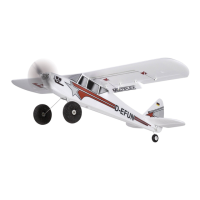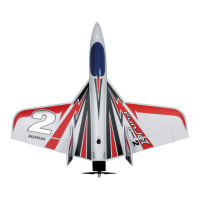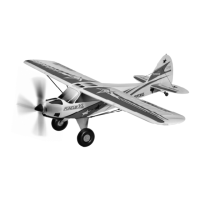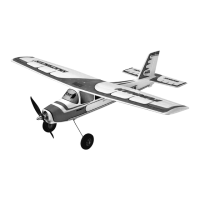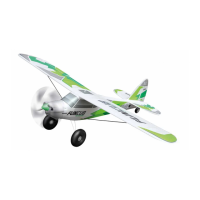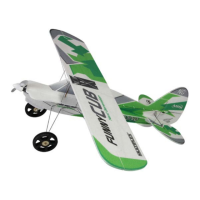9
51. Affixing the decals
The kit includes extensive decal sheets
2
. The individual letterings and
emblems have already been cut out and are afxed according to our
template (construction kit picture) or as desired. For positioning, there are
also several pictures in the building instructions. Cut out the large decals
with a little excess together with the carrier paper – carefully remove
circumferential waste (transparent) around the decal. Test position the
decal on the surface on which it is to be glued. After this, pull off the
carrier paper from the positioning location approx. 15 cm and cut off with
the scissors – the retaining carrier paper stays for the time being.
Position the element at the desired location and align it on the surface
with carrier paper. If everything ts, raise the decal slightly and slowly pull
out the carrier paper, starting at the cut surface. Carefully smooth out
the decal – do not rub immediately, only then can necessary corrections
(deductions) be made. Be careful here to ensure the lm is not stretched
and still ts. Then rub rmly all over and without any bubbles using a soft
cloth.
52. Affixing the landing skids
The kit includes two landing skids
⓭
made of robust special adhesive
lm. Stick them on at the front and back beneath the fuselage. Afx the
large lm directly behind the spinner in the middle on the fuselage joint
while rubbing rmly toward the outside. Stick on the smaller lm, starting
approx. 10 mm away from the fuselage tail.
Hint: Transfer the center markings to the oat body labels using a thin
waterproof pen . This allows you to position the parts in the middle on the
fuselage joint.
53. Mounting the battery
Use the adhesive tapes
⓴
and
㉑
as well as the adhesive attachment
strap
㉕
to x the battery securely in the model.
Feed the adhesive attachment strap through one of the three grommets
at the front in the fuselage beneath the CFRP square tube. If the right
position has been determined, x the adhesive strips to the left and right
on the CFRP tube.
54. Balancing out the center of gravity
In order to achieve stable ying qualities, your model, just like any other
aircraft, must be in equilibrium at a certain position. Assemble your model,
making sure it is ready to y.
The center of gravity is marked 75 mm away from the front edge of the
wings (hemispheres on the bottom). Using your ngers as support, pivot
the model horizontally. Set the center of gravity by positioning the battery
and, if necessary, by pushing in the trim weight 35 (sphere) into the
fuselage tail. Due to material density tolerances and varying equipment
variants (battery / transparent canopy) of the glider and the electric glider,
no exact specications can be made here. Trim weight may also be
necessary in the fuselage nose - this can be attached in the space behind
the motor - and secured into position using, e.g., hot glue. If the right
position has been found, mark the fuselage accordingly to ensure the
battery is always in the same position. Then close the trim weight opening
at the fuselage tail by sticking on the fuselage end piece
5
/ .
Fig. 15
Hint: The center of gravity can be conveniently balanced using the center
of gravity scale order no.: 69 3054 .
55. Setting the rudder deflections (guidelines!)
To achieve a balanced control of the model, the size of the rudder
deections must be set correctly. The deections are measured at the
lowest point of the rudders.
Elevator
Upward (joystick pulled back) approx. +15 mm
Downward (joystick pushed forward) approx. - 15 mm
Spoiler (elevator downward) approx. - 3.5 mm
Electric version: Gas mixture at height 0 mm
Flap mixture into
elevator at speed / thermal
approx. - 1 / 0 mm
Rudder
To the left and right approx. 35 mm each
Aileron
Upward / downward approx. + 20 / - 9
mm
Speed ight and aerobatic position (upward) approx. + 2.5 mm
Thermal (downward) approx. - 2.5 mm
Spoiler (aileron upward) approx. + 20 mm
Flap (camber-changing flap)
Horizontal transverse component (ap only
upward)
approx. + 10 mm
Speed ight and aerobatic position (upward) approx. + 3.5 mm
Thermal (downward) approx. - 3.5 mm
Spoiler (aps downward) approx. -27 mm
Spoiler (butterfly) / with additional transmitter - offset
Both ailerons upward
(20% transmitter - offset)
approx. + 28 mm
Both aps downward
(37% transmitter - offset)
approx. - 33 mm
Spoiler mixing at height approx. - 3.5 mm
Caution: The strength of the model is very high – but it is not
comparable with full GRP-CFRP models!
Speed ight and aerobatics always only in speed position of the ailerons
and camber-changing aps. Do not extend the buttery at high speed –
execute gliding arcs in an appropriate ratio to the speed! If you observe
Building instructions
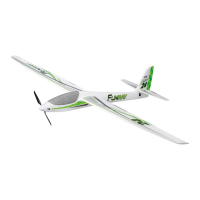
